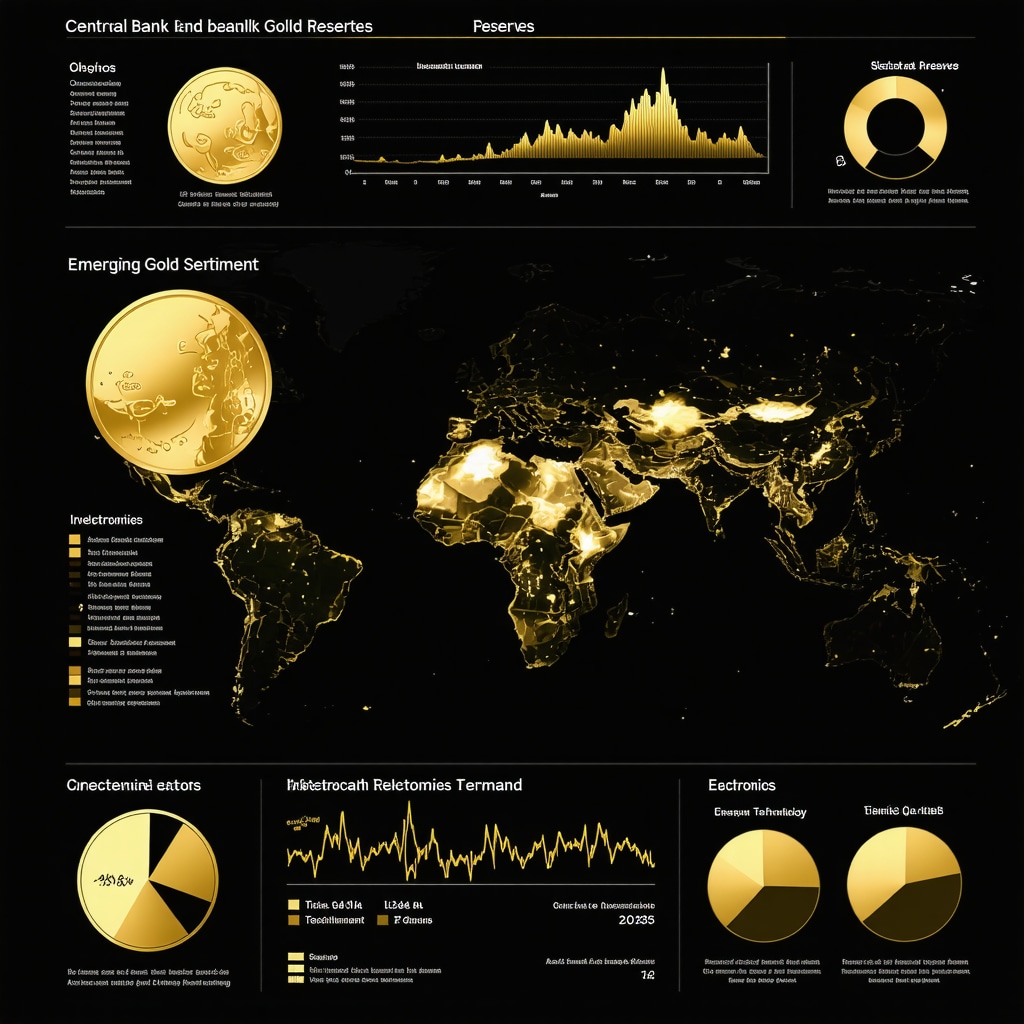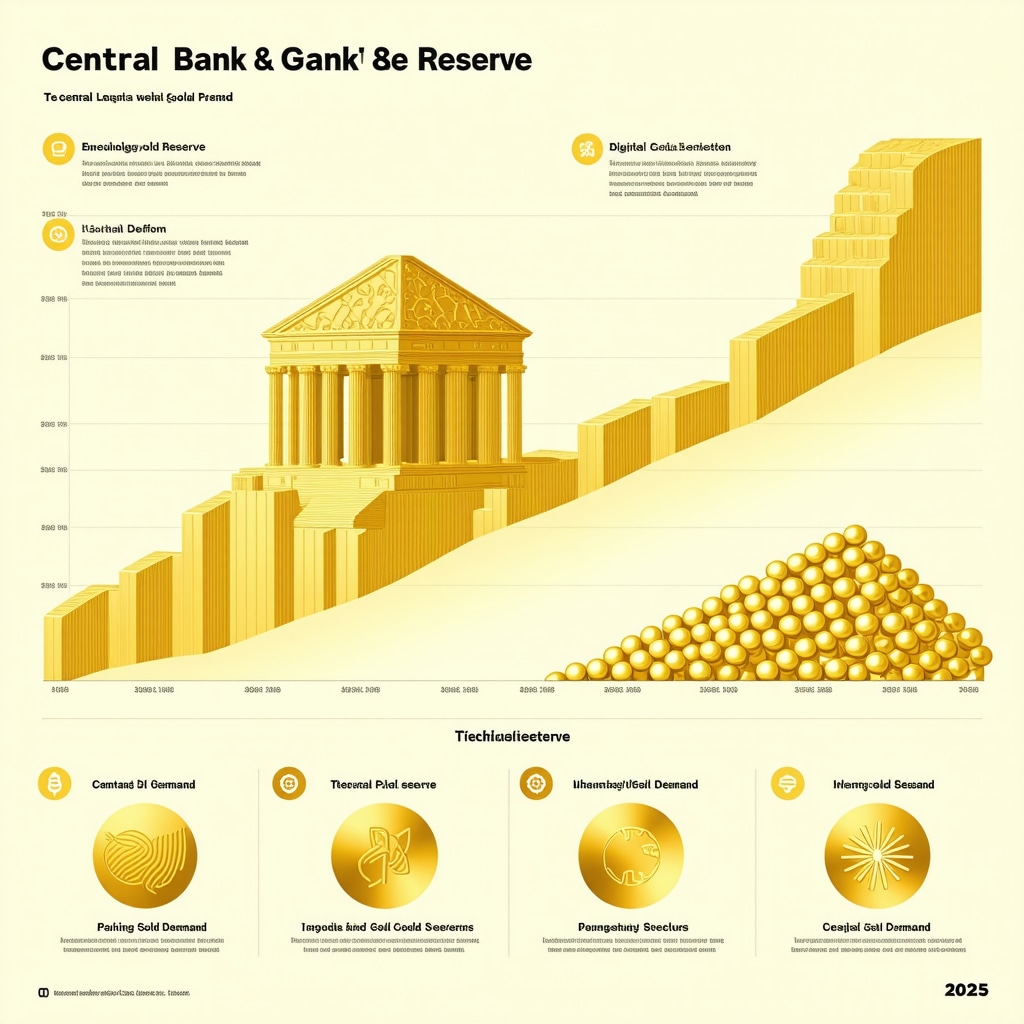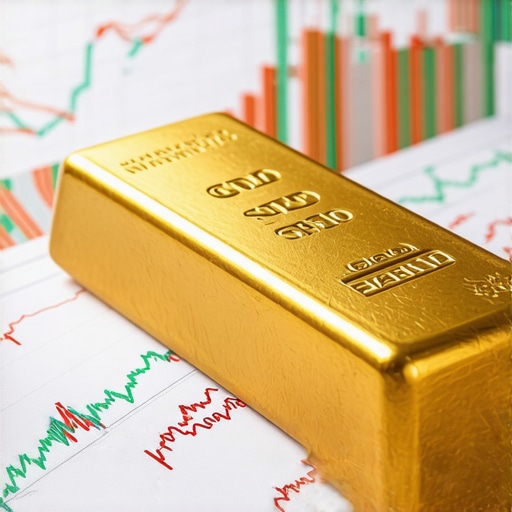Gold’s Golden Rules: Why Supply and Demand Are Your Best Friends
Imagine walking into a bustling market where the price of glimmering gold isn’t just about shiny allure but a complex dance of supply and demand. It’s not just a precious metal; it’s an economic barometer, a hedge against the unpredictable, and if you’re savvy, a ticket to investment gains. But how exactly do you decode this glittering puzzle? Let’s dive in with the enthusiasm of a seasoned columnist who’s seen gold’s ups, downs, and sideways quirks.
Digging Deeper Than the Surface: The Real Story Behind Gold Supply
Gold isn’t conjured out of thin air; it’s mined, recycled, and hoarded by central banks. Mining production is relatively stable but can be affected by geopolitical unrest, labor strikes, or environmental regulations. Recycled gold, often overlooked, plays a significant role especially when prices soar, as investors cash in their old jewelry or coins. And then there’s the big player — central banks. Their buying and selling patterns can dramatically tilt the supply balance, influencing prices globally.
Is the Gold Supply Tightening or Loosening Its Grip?
Here’s a thought to chew on: When central banks decide to buy more gold, are they signaling looming economic turbulence, or simply diversifying reserves? This subtle shift in demand can cause a ripple effect in market sentiment. For instance, according to the World Gold Council’s latest insights, central bank gold buying surged by 70% in recent years, underscoring a strategic move towards tangible assets during uncertain times (source).
Demand Dynamics: More Than Just Jewelry and Bling
Demand for gold spans beyond mere adornment. Industrial applications, especially in electronics, consume a steady chunk. Investment demand via ETFs, mutual funds, and gold futures trading adds layers of complexity. Seasonal festivals and cultural practices, particularly in countries like India and China, inject predictable yet powerful surges in demand. Don’t forget that economic sentiment — when inflation or currency doubts loom large, investors flock to gold as a safe haven.
Want to Play the Gold Game Smarter? Here’s a Nudge
If you’re serious about leveraging gold’s supply and demand intricacies, why not explore in-depth gold market analysis that breaks down these factors for 2025? Understanding these trends can elevate your investment strategy from guesswork to calculated moves.
So, what’s your take? Have you noticed how geopolitical tremors or central bank maneuvers have swayed your gold investments? Share your experiences or questions below — let’s turn this into a lively conversation worthy of the gold standard.
Central Banks: The Quiet Puppeteers of Gold Prices
Central banks have long been the silent giants behind gold’s supply-demand equilibrium. Their gold purchasing patterns often mirror macroeconomic anxieties, currency stability concerns, and strategic reserve diversification. When these institutions ramp up acquisitions, they not only tighten global supply but also send powerful signals to markets. Investors interpreting these moves can anticipate shifts in gold’s price trajectory, underscoring the importance of monitoring central bank activities closely.
How Does Investor Sentiment React to Central Bank Gold Movements?
Investor sentiment is a crucial component that amplifies or dampens the impact of supply-demand changes. When central banks increase their gold reserves, it often triggers a surge in demand from private investors fearing inflation or geopolitical instability. Conversely, a reduction or sale of gold holdings by central banks may signal confidence in economic recovery, prompting some investors to reallocate resources elsewhere. This dynamic interplay between institutional behavior and individual investor psychology creates complex feedback loops that influence gold price volatility.
For those aiming to refine their investment approach, understanding these sentiment shifts is vital. Resources like the World Gold Council’s Central Bank Gold Demand Trends provide authoritative data and analysis that can guide strategic decisions.
Beyond Jewelry: Untapped Demand Drivers Shaping Gold’s Future
While jewelry remains a significant demand pillar, emerging sectors are steadily carving out their influence. Electronics continue to require gold’s unparalleled conductivity and corrosion resistance, but the advent of green technologies is accelerating demand in unexpected ways. Photovoltaic cells, medical devices, and even space exploration technologies increasingly rely on gold’s unique properties. Furthermore, the rise of digital gold platforms and gold-backed cryptocurrencies introduces a new dimension to gold demand, blending traditional value with innovative financial instruments.
This evolving demand landscape suggests that investors must expand their lens beyond conventional metrics to capture gold’s full potential in diversified portfolios.
Strategic Gold Investment: How to Navigate 2025’s Complex Market
Given these multifaceted supply and demand factors, investors are challenged to adopt nuanced strategies to optimize returns and hedge risks. Incorporating gold ETFs, mining stocks, and physical bullion can provide balanced exposure. Additionally, staying informed on geopolitical developments, central bank policies, and technological advancements is indispensable.
For practical guidance on crafting such a diversified approach, explore our detailed insights on how to build a balanced gold portfolio with ETFs and stocks. This resource unpacks actionable tactics to harness gold’s multifaceted market dynamics effectively.
What’s your perspective on the evolving drivers of gold demand and supply? Have you adjusted your investment strategy in response to central bank trends or technological shifts? Share your thoughts or questions below — engaging with fellow investors enriches our collective understanding and sharpens our investment acumen.

Decoding Central Bank Gold Reserves: Signals, Strategies, and Market Implications
In the labyrinth of global finance, central banks act not only as custodians of national wealth but also as influential market makers in the gold arena. Their decisions to accumulate or divest gold reserves provide more than just supply-side adjustments; they signal macroeconomic forecasts and geopolitical risk assessments that ripple through global markets. Analyzing these movements requires a nuanced understanding of central banks’ strategic imperatives and the geopolitical context in which they operate.
For example, recent trends show that nations with emerging economies have ramped up gold purchases as a hedge against currency devaluation and to reduce reliance on the U.S. dollar. This diversification strategy, while aimed at economic resilience, tightens gold availability for private investors and heightens price volatility. Conversely, some developed economies have occasionally sold portions of their gold reserves to capitalize on elevated prices or to rebalance portfolios, which can momentarily ease supply constraints.
How can investors interpret central bank gold reserve fluctuations to optimize portfolio decisions?
Understanding these movements involves dissecting public disclosures, geopolitical developments, and monetary policy signals. Investors who track central bank announcements and correlate them with macroeconomic indicators—such as inflation rates, currency stability, and international trade tensions—can anticipate potential gold price shifts. For instance, an uptick in gold reserve purchases during periods of rising inflation expectations often precedes price rallies, offering strategic entry points for investment.
Moreover, integrating real-time data analytics and sentiment analysis tools can enhance the predictive power of these insights, allowing for dynamic portfolio adjustments. Resources like the World Gold Council’s Central Bank Gold Demand Trends provide granular data that, when combined with geopolitical intelligence, form a powerful toolkit for sophisticated investors.
Emerging Frontiers in Gold Demand: Technological Innovations and Digital Finance’s Role
Beyond traditional demand drivers, the landscape of gold consumption is rapidly evolving with technological innovation and digital finance reshaping its trajectory. The burgeoning green technology sector, including electric vehicles and renewable energy infrastructures, increasingly relies on gold for its unparalleled conductivity and corrosion resistance. For instance, gold’s integration in advanced photovoltaic cells enhances solar panel efficiency, directly tying gold demand to global sustainability initiatives.
Simultaneously, the rise of digital gold platforms and gold-backed cryptocurrencies is redefining gold’s role in modern finance. These instruments offer liquidity and fractional ownership that democratize access to gold investment, but they also introduce regulatory and systemic risks that sophisticated investors must rigorously evaluate. The intertwining of physical gold markets with these digital assets creates complex demand dynamics that traditional models may not fully capture.
What are the risks and opportunities presented by digital gold platforms and gold-backed cryptocurrencies?
While these innovations open new avenues for portfolio diversification and capital flow, they also expose investors to cybersecurity vulnerabilities, regulatory uncertainty, and potential market manipulation. On the opportunity side, they facilitate rapid transaction settlements and broaden market participation beyond conventional investors. Navigating this dual-edged sword demands a deep dive into platform credibility, technological infrastructure, and evolving legal frameworks.
As these trends gain momentum, monitoring regulatory developments and technological advancements becomes imperative for investors seeking to harness gold’s full potential within a diversified strategy.
Crafting a Forward-Looking Gold Investment Blueprint: Integrating Macro Insights with Tactical Execution
To thrive amid 2025’s complex gold market, investors must weave macroeconomic insights with tactical execution. This means not only tracking central bank reserve shifts and emerging demand sectors but also dynamically adjusting exposure across physical gold, ETFs, mining equities, and digital gold instruments. Employing hedging strategies against currency fluctuations and geopolitical shocks further fortifies portfolios.
Intelligent allocation requires granular risk assessment models that factor in supply constraints, technological adoption rates, and market sentiment. Leveraging expert analyses and advanced analytics tools can elevate decision-making from reactive to anticipatory, empowering investors to capitalize on nuanced market movements.
For a comprehensive walkthrough on constructing such a robust, adaptive portfolio, check out our expert guide on building a balanced gold portfolio with ETFs and stocks. This resource delves into practical methodologies and real-world case studies tailored for the discerning investor.
Unpacking Central Bank Gold Strategies: The Subtle Signals Behind Reserve Adjustments
Central banks don’t just accumulate gold as a passive store of value; their reserve strategies often encapsulate nuanced economic foresight and geopolitical signaling. Recent years have witnessed emerging economies intensifying gold purchases to hedge against currency volatility and geopolitical risks, effectively recalibrating the global gold supply landscape. Conversely, selective divestitures by developed nations can indicate confidence in economic stabilization or portfolio rebalancing. This sophisticated tug-of-war between accumulation and release reshapes market liquidity and price expectations, making it imperative for investors to decode these institutional moves beyond surface-level data.
How Can Investors Leverage Central Bank Gold Reserve Trends for Tactical Advantage?
Astute investors who integrate central bank reserve disclosures with macroeconomic indicators—such as inflationary pressures, currency fluctuations, and geopolitical tensions—can anticipate pivotal price movements. For example, a surge in central bank gold acquisition often precedes inflationary spikes or currency depreciation, presenting strategic entry points for gold accumulation. Utilizing World Gold Council’s Central Bank Gold Demand Trends equips investors with granular data and trend analysis to refine timing and allocation decisions. Additionally, coupling this data with sentiment analysis tools enhances predictive accuracy, positioning portfolios advantageously in volatile markets.
Digital Gold and Technological Demand: Redefining Gold’s Investment and Industrial Paradigms
The advent of digital gold platforms and gold-backed cryptocurrencies is revolutionizing traditional gold investment paradigms, facilitating fractional ownership, enhanced liquidity, and democratized market access. Yet, these innovations introduce intricate challenges, including regulatory ambiguities, cybersecurity vulnerabilities, and integration complexities with physical gold markets. Parallel to this, green technologies such as photovoltaic cells and electric vehicles are escalating industrial gold demand, linking gold’s valuation to sustainability trajectories and technological adoption curves.
What Are the Strategic Risks and Opportunities in Embracing Digital Gold and Technological Demand?
While digital gold platforms offer unprecedented accessibility and transactional efficiency, they expose investors to cyber risks and regulatory flux that could disrupt market stability. Conversely, burgeoning industrial demand driven by renewable energy and medical technologies underpins a robust, long-term growth vector for gold consumption. Navigating these dual forces requires a sophisticated understanding of platform credibility, regulatory landscapes, and technological trends. Investors should consider integrating traditional gold assets with emerging digital instruments to harness diversification benefits while mitigating systemic risks.
Implementing a Forward-Thinking Gold Investment Framework Amidst Evolving Market Complexities
Crafting a resilient gold portfolio in 2025 demands a synthesis of macroeconomic insight, technological trend analysis, and tactical asset allocation. Combining physical gold holdings with ETFs, mining equities, and selective digital gold exposures can optimize risk-adjusted returns. Moreover, hedging against currency volatility and geopolitical uncertainties via dynamic rebalancing fortifies portfolio robustness. To navigate this multifaceted landscape effectively, investors can explore our comprehensive guide on building a balanced gold portfolio with ETFs and stocks, which offers actionable strategies and case studies tailored for sophisticated market participants.
How have central bank activities or digital innovation influenced your gold investment approach? Share your insights or queries below and join an expert dialogue that sharpens collective investment acumen.

Expert Insights & Advanced Considerations
Central Banks Are Not Just Buyers; They’re Strategic Signalers
Beyond their role in influencing gold supply, central banks act as barometers of global economic sentiment. Their purchase or sale of gold reserves often foreshadows shifts in inflation expectations, currency valuations, and geopolitical risks. Sophisticated investors monitor these moves not only for immediate market impact but also as cues for broader macroeconomic positioning.
Technological Demand Is Reshaping Gold’s Industrial Footprint
Emerging technologies—especially in renewable energy, medical devices, and electronics—are driving a structural increase in gold demand. This trend diversifies traditional consumption and links gold’s price trajectory to innovation cycles and sustainability initiatives, making it essential for investors to factor in industrial adoption rates alongside conventional market data.
Digital Gold Platforms Introduce New Complexities and Opportunities
The rise of digital gold and gold-backed cryptocurrencies democratizes ownership and liquidity but also introduces regulatory and cybersecurity challenges. Investors who integrate these instruments must balance their portfolio’s traditional physical gold exposure with emerging digital assets while remaining vigilant about platform credibility and evolving regulations.
Investor Sentiment Amplifies Supply-Demand Signals in Volatile Markets
Market psychology often magnifies the effects of supply-demand shifts, especially during periods of geopolitical tension or economic uncertainty. Recognizing this feedback loop enables investors to anticipate price volatility and strategically time entries and exits rather than reacting purely to fundamentals.
Dynamic Portfolio Allocation Is Imperative in 2025’s Gold Landscape
Given the multifaceted drivers at play, a rigid investment approach is suboptimal. Combining physical bullion, ETFs, mining equities, and selective digital gold exposure while actively hedging against currency and geopolitical risks creates a resilient framework that adapts to evolving market conditions.
Curated Expert Resources
- World Gold Council’s Central Bank Gold Demand Trends – Offers granular, up-to-date data on central bank gold purchases and their macroeconomic implications (source).
- How to Build a Balanced Gold Portfolio with ETFs and Stocks – A detailed guide exploring tactical asset allocation within the gold sector for optimized risk-adjusted returns (read more).
- Gold Market Analysis 2025: Key Factors Influencing Global Supply & Demand – In-depth analysis of current and forecasted trends shaping gold’s supply-demand dynamics (explore).
- Understanding Gold Demand Trends: What Drives Prices in 2025 – Comprehensive review of demand drivers including technological innovation and digital finance impacts (discover).
- Safe Ways to Buy and Store Gold Bars: Tips from Trusted Dealers – Essential advice for securing physical gold investments against fraud and theft (learn more).
Final Expert Perspective
Gold’s supply and demand ecosystem in 2025 is an intricate tapestry woven from central bank maneuvers, technological innovation, evolving investor sentiment, and digital financial instruments. For the discerning investor, recognizing these advanced dynamics is not merely academic but foundational to crafting a resilient, forward-looking gold investment strategy. Embracing a multidimensional approach—balancing physical assets with ETFs, mining stocks, and digital gold—while staying attuned to macroeconomic signals delivers a competitive edge in navigating gold’s volatility and capitalizing on its enduring value.
Engage with this evolving discourse by sharing your nuanced perspectives or questions on gold investment strategies. Dive deeper into expert analysis and tactical guidance by exploring resources such as our balanced gold portfolio guide. Your insights enrich the collective wisdom and sharpen the gold standard of investment excellence.









